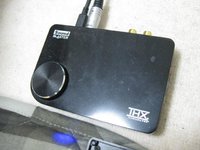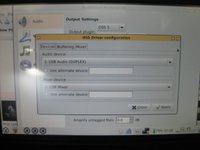It seems better to me, especially when you go on higher volumes, sound seems to be a little clearer. The USB to Optical hardware I am using is very decent so it may depend on what you use as well.
Even if you have an excellent cable you certainly have losses due to the analog connection. I do not think you can beat the optical cable there : there is absolutely no loss until the Amplifier. I have very big speakers (and decent quality ones) so you may not be able to hear the difference on average or small speakers, this being said.
I've tested a real audiophile setup: With the NAD amp + Linn Keosa speakers of my friend, we compared the sound of the Pandora to his M-Audio Audiophile 2496 (ICE1712) using some FLAC files, which we previously compared to his matching NAD CD player using the original CD the FLACs were created from. The difference is noticeable, but it's way closer than I would have expected, the Pandora really doesn't need to hide from audiophile hardware.
Shifting the audio output to digital makes the amp's DAC the element with probably the most influence on sound quality, and from my humble experience a "decent" sound card will perform better than a "decent" amp. The loss happening through the cables when going analogue are really negligible with a classic home setup, just like cables coated with solid silver or gold won't make any noticeable difference in that situation.
And I don't want to know whether that Creative device tinkers with the audio data... My friend's dog didn't like his previous Creative card messing with it at all - totally nervous (Creative) vs. instantly falling asleep, even at rather high volume (M-Audio) (at late evenings), and once he made a direct comparison with other decent chips he literally kicked it out, even preferring his on-board Realtek chip while waiting for the M-Audio, because it sounds more authentic. Granted, it wasn't one of the high end ones, but it's still something I would not have expected from Creative.
That ICE1712 chip is btw by far one of the best you can get for your money when running Linux, if you ask me - M-Audio is the only one who gives (extreme) long term driver support, though, meaning they have the only ones that have proper Win7+ drivers (and the only ones still being actively sold)... Cards with other chips of similar quality cost a fortune and may have no Linux support at all.
It's really a shame how the mainstream market went down - in the old times you could get mainstream laptops with audio chips that outperform a lot of decently priced modern sound cards (e.g. Pentium-III Sony Vaios with Yamaha YMF7xx audio chips - classic instruments sound awesome with these!).









